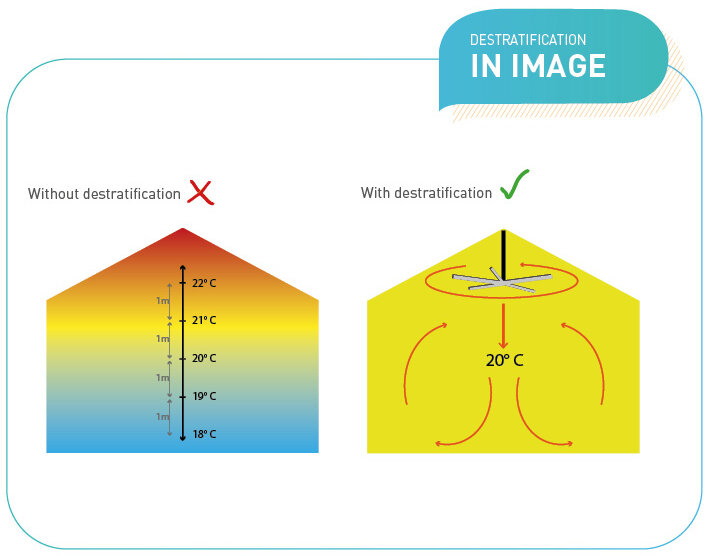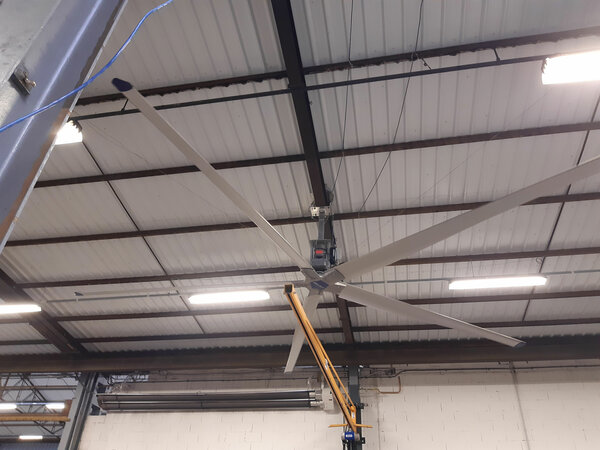Air stratification is a natural concept as warm air is lighter than cool air and that is create layers of temperature. Temperature gaps can be up to 1°C / m, which results into thermal loss within the building.
The air destratification concept is about circulating the air to homogenize the temperature in a room, and letting the warm air go up to the ceiling.

This solution will, at one given location, homogenize the room temperature and humidity between the ground and ceiling level. It will result into an optimal and uniform comfort in the room.
The solution for destratification limits the use of heating systems and the CO2 emission levels. Therefore, the energy bill is reduced. As such solution reduces the thermal loss within a building, it will reduce the need to heat the building.
Some respiratory diseases can be prevented with the air destratification. As most virus, allergens, and pollutants linked to the activity in the building cannot incubate at one set location because the air is moved around, it will be beneficial to the health of the building’s occupants.
Destratification equipment have larger blades and a slower speed than ceiling fans.
To optimize this solution, and according to the room volume, there are many diameter of equipment available.

In the areas away from the vents on the façade of the building, as it can’t benefit from natural ventilation, we observe a more important thermal stratification.
The study of the building, and of its problematic areas, has highlighted the diameters of equipment needed (3 to 7m) to adapt to the volumes of air to move around.